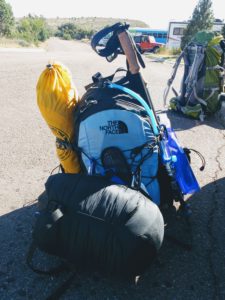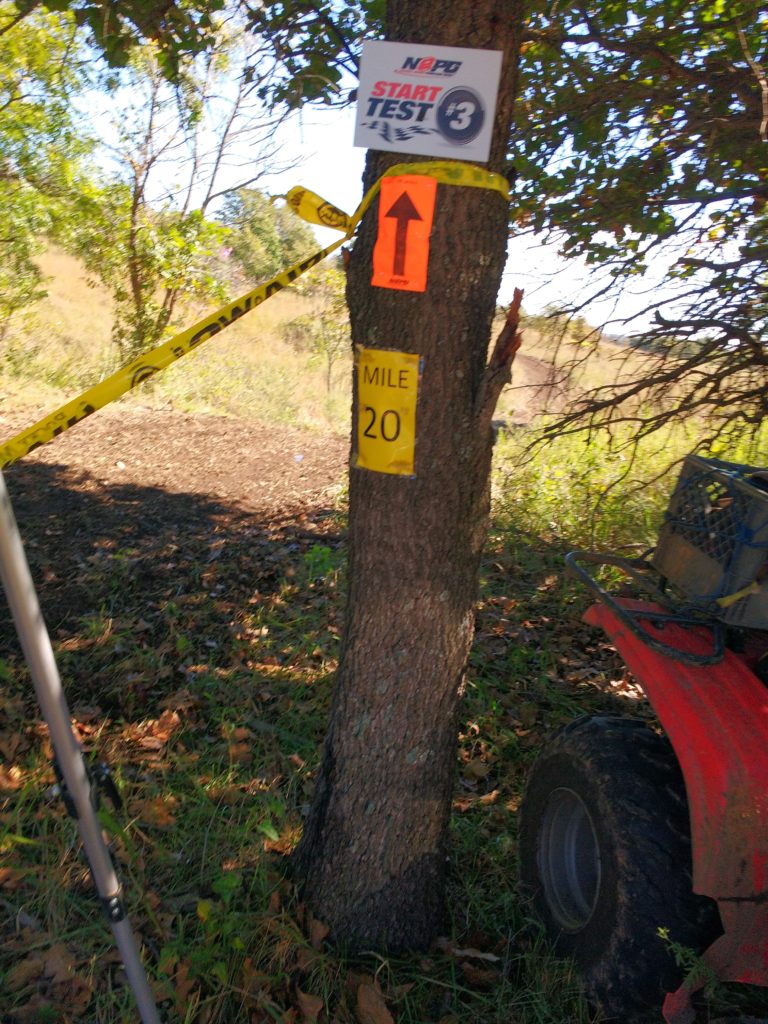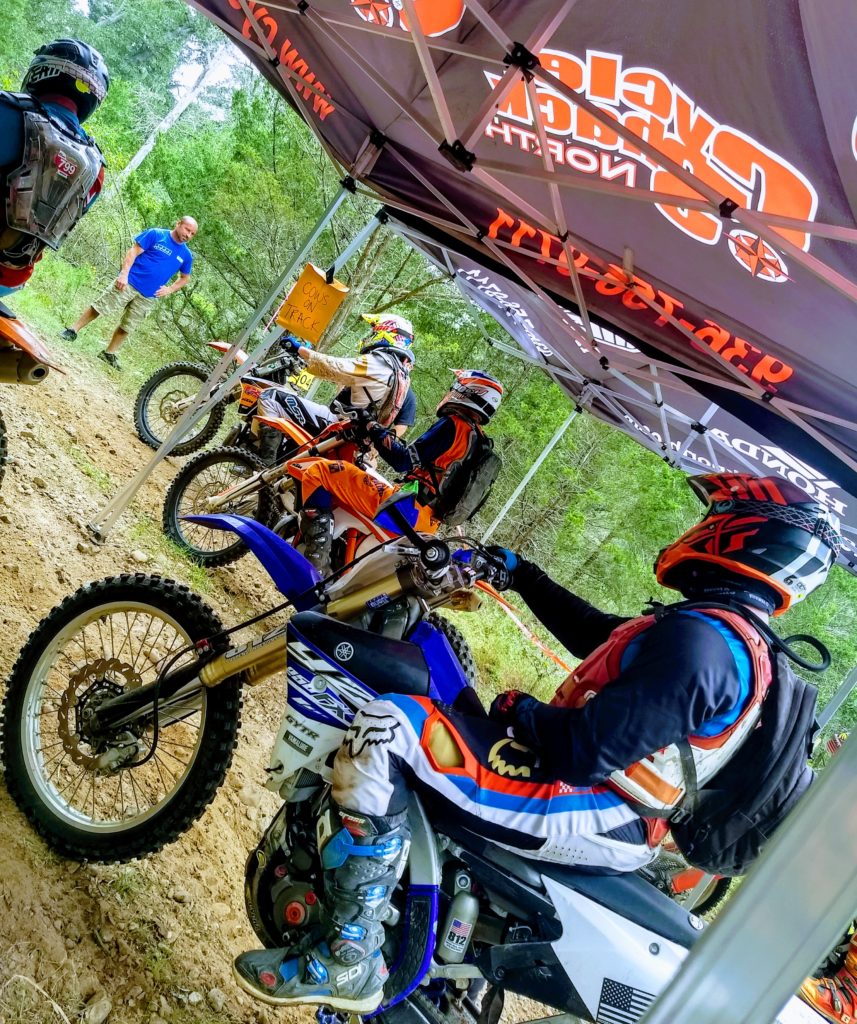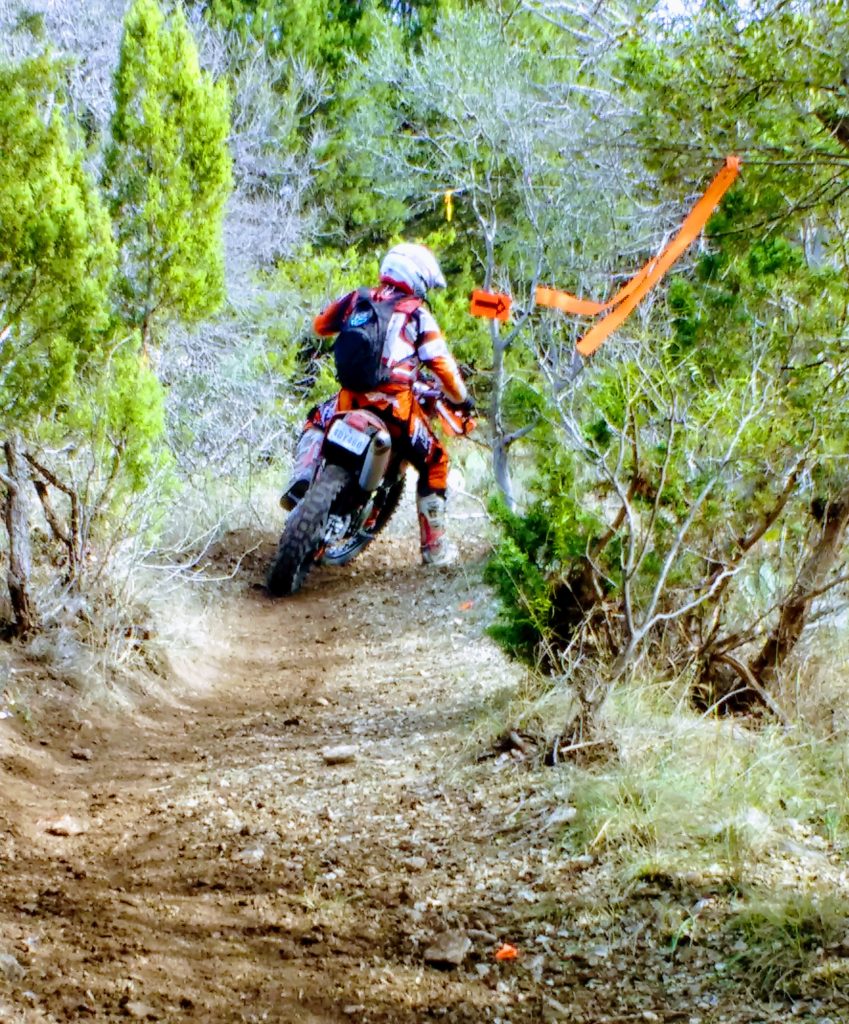Exploring the variety of Texas State Parks
I already spend a lot of time outdoors, but like many people during the pandemic, I was looking to spend more time in the state parks. Texas has 51 state parks, compared to its 2 National Parks. So, this was a good year to invest in a Texas State Park Pass and state exploring. Here’s a few of the stops I made.
Bastrop State Park – This is a small park super close to Austin, and the proximity makes for an easy camping weekend or day hike and keep this park quite busy. Many will remember it was ravaged by wildfires 10 years ago, and the burnt trees still standing are an important reminder. There are few miles of easy hiking trails and good paved trails for biking, or hook up with the neighboring Buescher Park for some hilly road cycling.
Palmetto State Park – This little park was a great day trip but camping is also available. You can SUP, they even have rentals, or enjoy hiking some easy flat trails through the Palmettos.
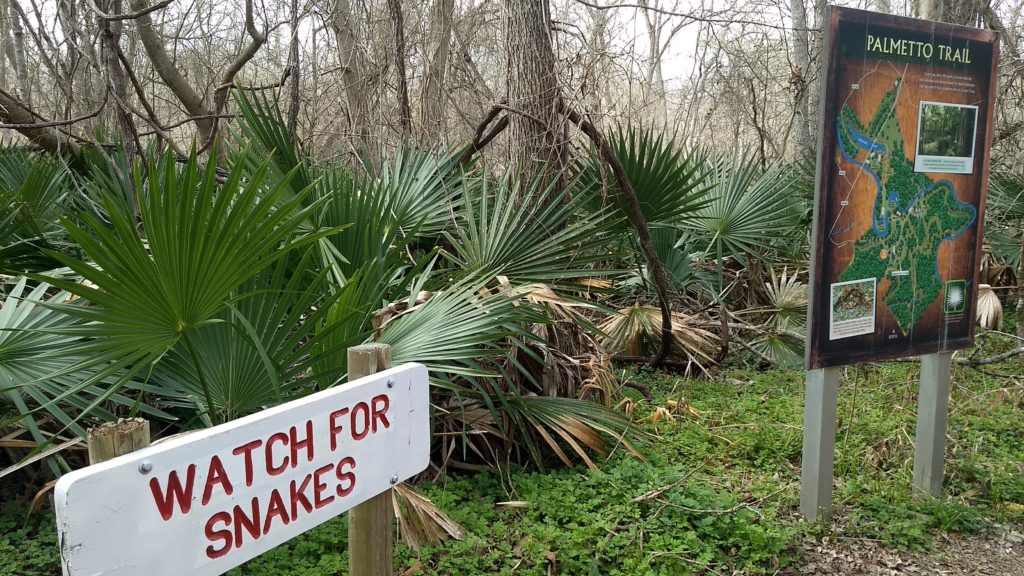
Goliad State Park – This historical park has short trails but is right on the San Antonio river, where you can camp, paddle and learn more about Cinco de Mayo. Spend time exploring the mission and the museum down the street. Even if you don’t hike or camp, it’s worth a stop for the beautiful mission.
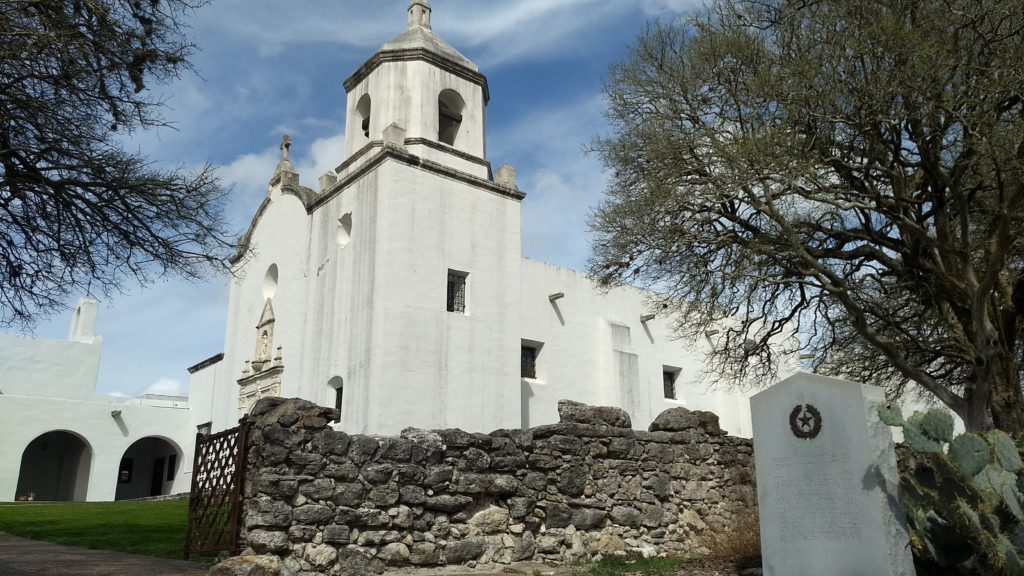
Caddo Lake State Park – Close to the Louisiana border, this park was definitely worth the drive. We booked a shelter only because it was the last camp stop available, which was lucky when a thunderstorm rolled in the first night. I couldn’t believe it didn’t flood and wasn’t very muddy, and the shelter was just enough to keep up dry. And the bathrooms were clean. Make sure to SUP or paddle, weaving in and out of the spooky baldy cypress trees takes you to the river. There’s only about 2.2 miles of trails, but we spent most of the day on the water. For the scenery and water fun, this was an excellent road trip.
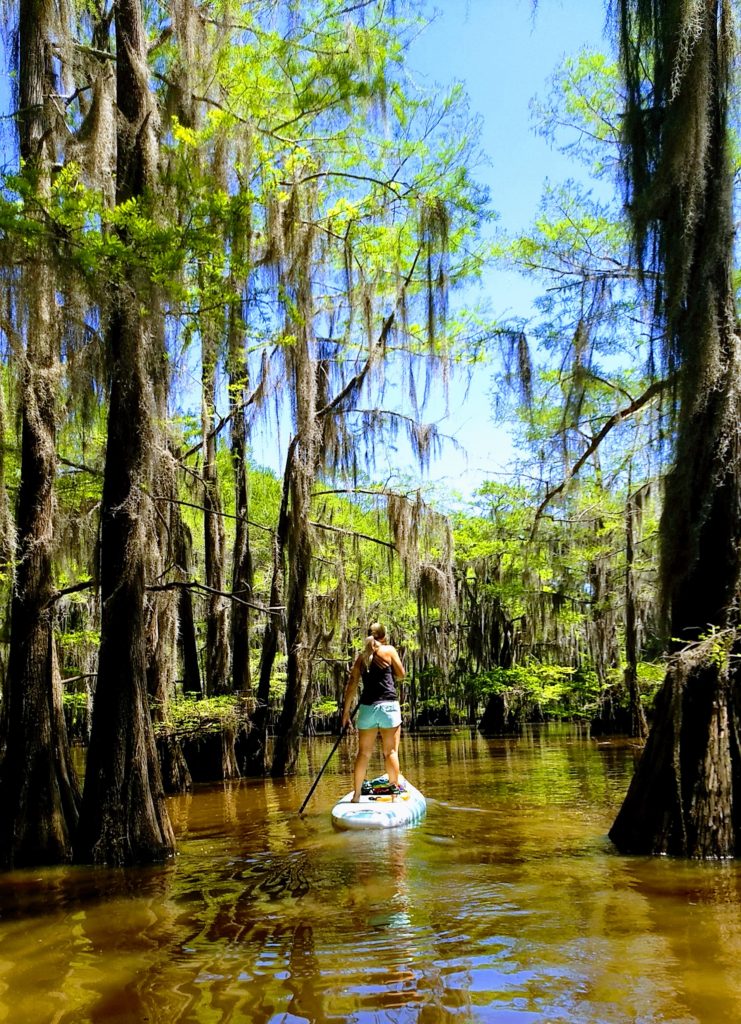
Inks Lake State Park – Another very popular park in the Texas hill country. On a calm day you can SUP, but it’s very hard on a windy day! Lots of people enjoy hiking and boating here, and there lots of shaded picnic tables for day or overnight use.
Palo Pinto Mountains State Park – I signed up for the Ultra Expeditions Hidden Hills Race specifically to check out this new state park that’s not yet open to the public. The race gave us a small glimpse of the park with fields of wildflowers galore and also a lot of mosquitos. The hills weren’t too bad, and there were good stretches of the 10k that were relatively flat. I can’t wait for the park to be open, but that will probably be a few years out.
Mustang Island State Park – The Padre Island National Seashore protects 70 miles of beach, in addition to that there are other protected areas. Indoor and outdoor showers, and covered picnic structures make beach days even better.
Aransas National Wildlife Refuge – We went for the whooping cranes, but got to see so much more wildlife than I expected. Deer, alligators, and a variety of birds like spoonbills can be seen from the trails or view points. Bonus – this park is near the oldest tree in Texas.
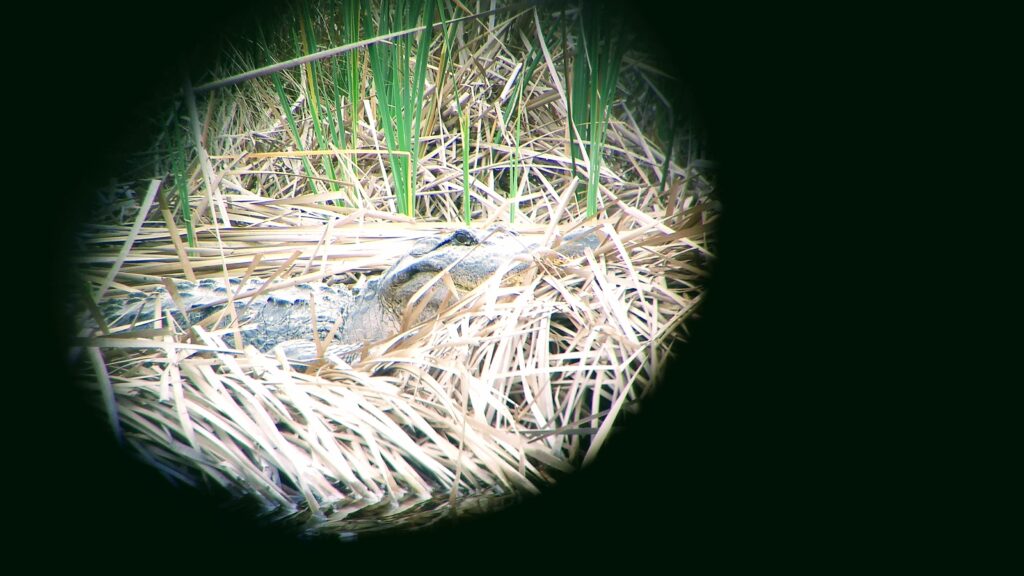
Lost Maples State Natural Area – I’d been wanting to go here for years, and even though I thought the timing was right the maples weren’t showing off just yet. This park is very popular for day or overnight camping. The primitive camp sites are an easy mile+, but some of the hikes that offer amazing views are very steep. I’m glad I finally went, but it wasn’t more amazing than many of the other parks.
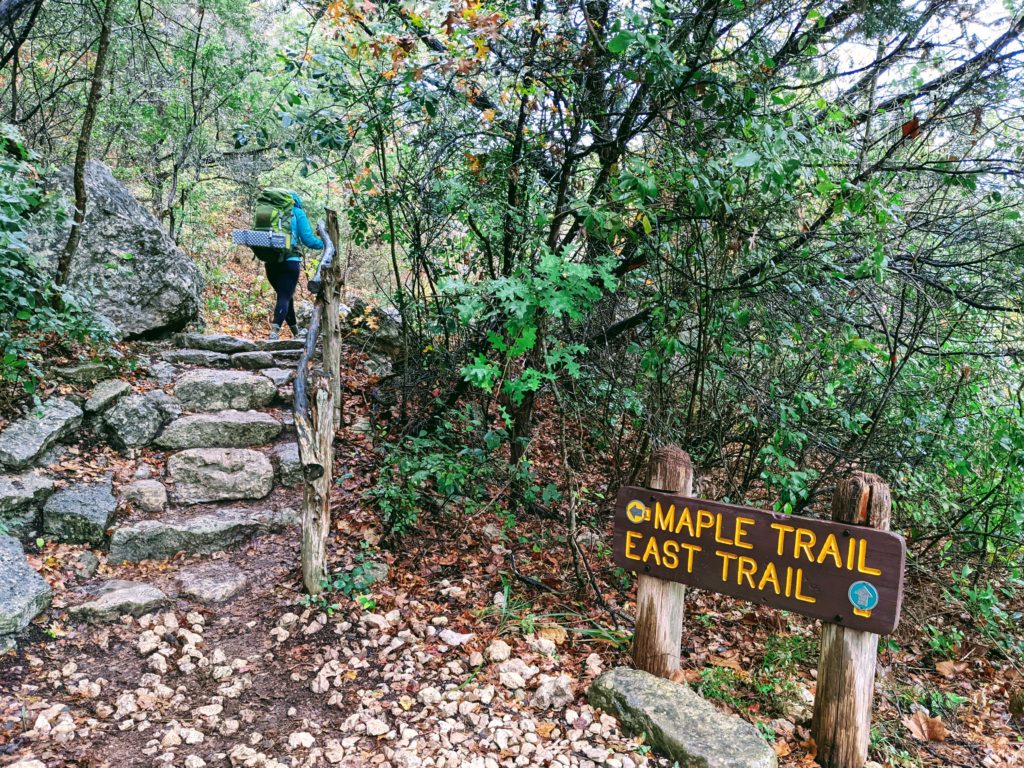
Hill Country State Natural Area – I was here for a trail race and what most struck me was the trails I explored were all exposed. Which is something to consider in the summer, although my primitive campsite was shaded. Well marked trails and nice vistas, and close proximity to Bandera, but otherwise not a park I’d go out of my way to visit.
Guadalupe River State Park – An easy two hour drive from Austin, but definitely in a flight path, as we heard many planes passing overhead. Even though Guadalupe River State park is close, it was my first visit and definitely worth it. I’m sure with the easy river access, it’s a popular park in the summer. We rented a teardrop camper for the two night trip, and it was a lovely sunny couple of days. 70 degree high in February is perfect camping weather. Our camper had a bed and kitchen, so the clean and brand new bathrooms with private showers were very ideal. It was an easy 6 mile afternoon hike, although there were more miles of trails on the other side of the river you can drive to. The wildlife was pretty good – 3 does, more armadillos than I could count, one possum and lots of birds – although it wasn’t golden cheek warbler season yet.
What’s your favorite Texas State Park and why? The vastness of the state lends itself to a variety of parks, so get out there and enjoy!
Tips:
- Make reservations well in advance.
- Make it a day trip, if you aren’t into camping. Take a picnic and enjoy the great outdoors.
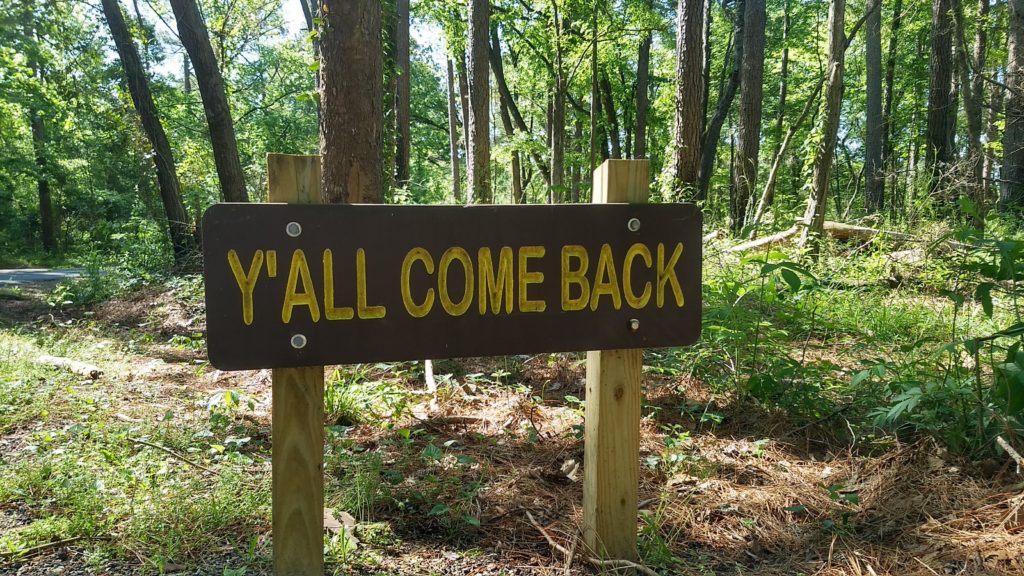
Through the Gears: Dirt Bike Enduros
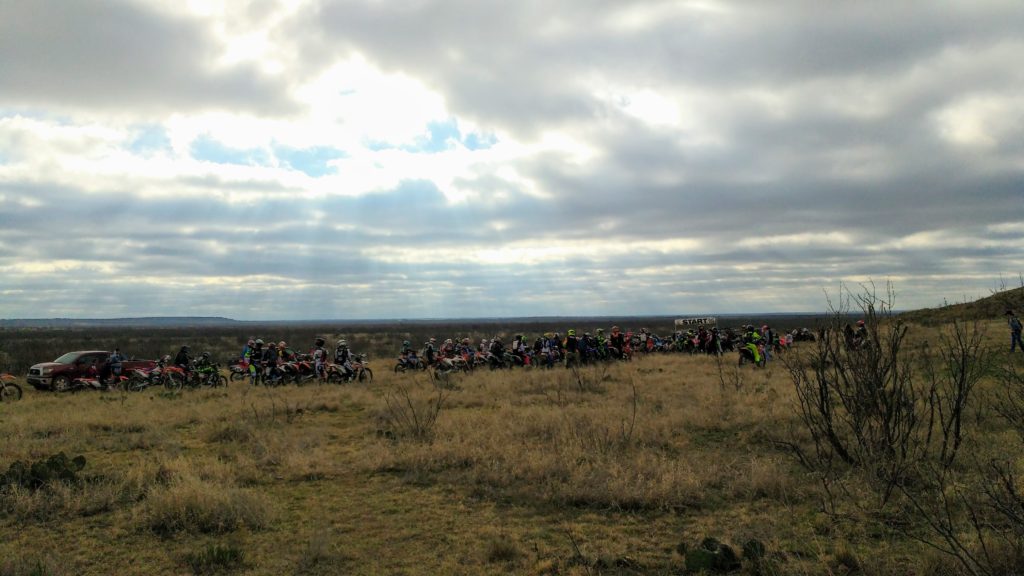
I’ve completed many different races, and I’ve spectated many races, but when my husband started racing dirt bike enduros we had a lot to learn. Many get into racing because they know someone doing it, but if you don’t maybe this can shed some light. In the past three years, we’ve had a blast traveling from middle-of-nowhereville West Texas to Oklahoma to Colorado. But no matter how demanding each race is, it felt difficult to just get started in the sport. Hopefully I can share some helpful information, from a racer and spectator’s perspective, to get you from casual rider to podium killer. Okay, okay, maybe not the podium part, but as I tell my husband, having fun is practically a win.
Getting Started
Probably the most intimidating part to any sport is transitioning from rider to racer. But if you are already into dirt biking then you are used to being challenged, go ahead – take the leap! If you want to get into dirt bike riding for racing or just for fun, send an email here for lessons info.
Before the first race, I had a million questions. TSCEC, or Texas State Championship Enduro Circuit, is Texas’ enduro series which hosts a number of races each year. But since we are usually driving many hours to get to different race sites anyway, we also went to a RMEC race, which is the Colorado circuit, and Blackjack, out of Oklahoma. The organizations are volunteer run, and those volunteers do an amazing job organizing and maintaining the safety of the racers on trails that may cover 100 miles.
Most of those race-day questions though may not be answered. As a racer, I’m used to knowing the route, terrain, and elevation changes. For these races you may only get the mileage, because part of the challenge is being able to adapt. If the mileage seems daunting, it is broken up into tests with a short rest time of 5-10 minutes between each depending on when you finished the last test. It’s still tough but it’s not full throttle the whole time. Racers are divided into classes based on ability. AA and A being the top classes and C being the jumping off point for newer racers. C class riders usually have a shortened version of the A/B tests, called the “short course”, or “super-short course” for the younger racers. Classes are then broken up further based on age or your bike’s engine size.
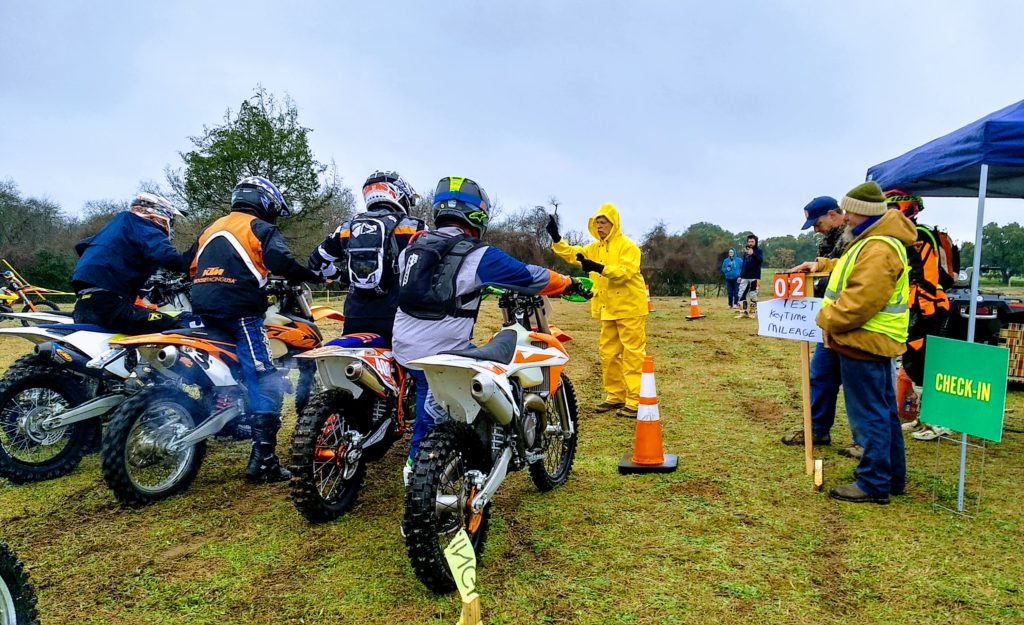
Race Day
Once you’ve put time and mileage on the bike and are ready for your first race, what’s race day like? Every race day will start with a rider’s meeting about an hour before the official race time start. However, based on your number you’ll start that many minutes after the official start, as riders are released in rows every minute. So, if your race number is 12, the rider’s meeting will be at 8am, race starts at 9am, and you’ll start on your first test at 9:12am. From there you’ll follow the marked course until the end of that test, where you’ll line up again just like the first test. The marker tape and arrows are your life line to stay on course, and more info on that is typically given during the riders’s meeting. There may also be a designated gas stop break, to allow refueling of your bike and your body.
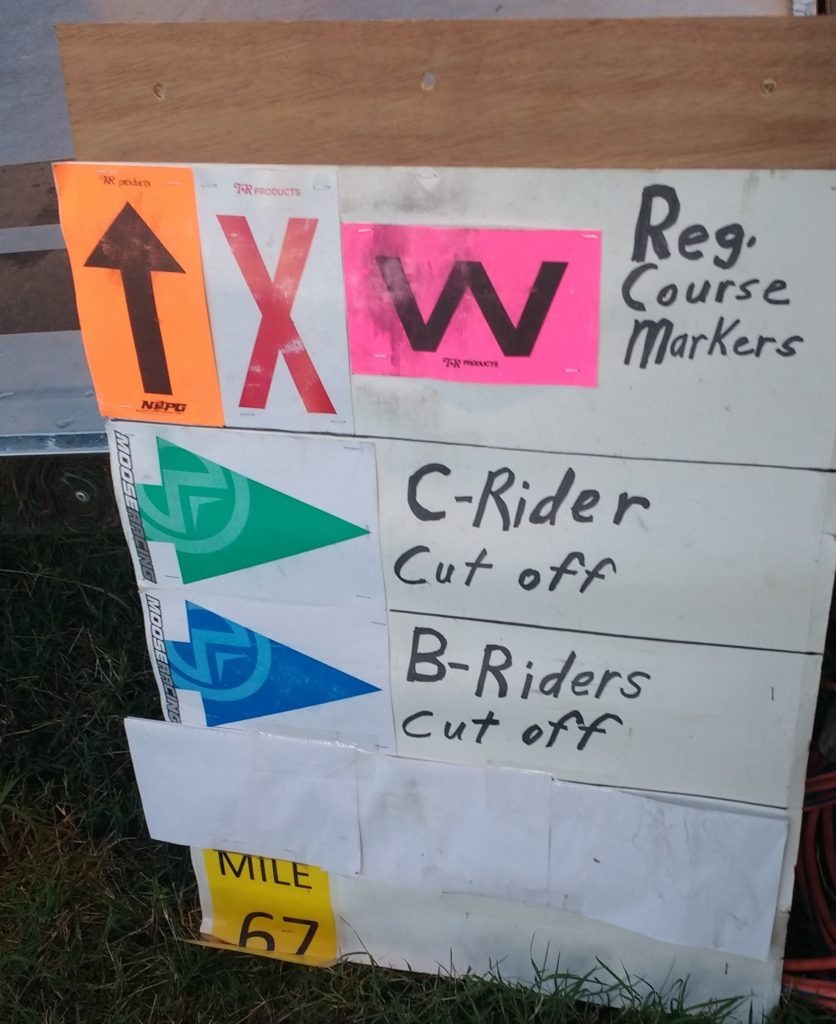
If you are feeling nervous, don’t worry you won’t be alone. Everyone had their first race once, and although there’s sadly few women racers, there are men of all ages and abilities. And the camaraderie is as good as any other trail sports I know. Eventually, after 4, 5, 6, or even 7 hours you’ll finally finish! Time to eat!
Spectating
Enduros are mostly not spectator-friendly. There may be a few spots where you can see your racer at the start or end of a test. But most of the hours I read or hike around. Most races are held at private ranches, where there’s probably no cell coverage. There also may or may not be food trucks, so always take snacks. The race may also be quite a few miles from any town. Plan to stay at the race site for many hours, and plan to not be able to get food immediately after the race, unless you traveled in an RV. I mostly go to provide my husband some company on the road trip, since he’s done the same for me.
Tips:
- Bring your own food and drinks for racers and spectators.
- Bring a towel.
- Wear boots for the cactus, mud, mesquite needles etc.
- Bring cash for a race shirt, which are usually provided by the sponsoring area riding club.
- Check the TSCEC website for the race schedule. About a month before each race a flyer will be posted with the race’s mileage.
- During training, practice being on the bike for 5 hours.
Hike to the Top of Texas: Guadalupe Peak
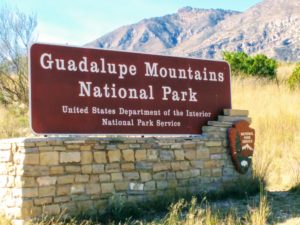
You’d have thought we were just another Thelma and Louise, without the Brad Pitt part. I woke at five a.m., eager to start our eight hour road trip to West Texas. You’ll understand if you’ve ever driven through West Texas, it’s a flat, high-speed expanse of big sky ruralness. But a perfect place to escape it all, a place to soothe your soul and an inopportune place to run out of gas. My husband might describe it differently, using more romantic and dramatic words, and perhaps that’s the point. It’s a place that will fill you up with whatever you need, that is except gasoline.
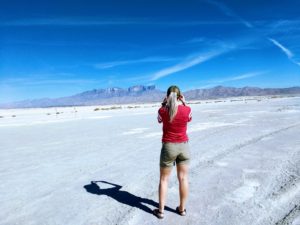
My friend, Kimberlee, and I set out to bag the summit of Guadalupe Peak, the highest natural point in Texas in the Guadalupe Mountains National Park. At an honorable 8,715 feet, it ranks 14th out of highest state points. We took Friday off of work, arriving around noon, hoping to get one of the peak’s five backpacking permits. Even though we got pulled over just outside Fort Stockton by a very kind highway patrolman, we still made great time. He reminded us to slow it down a bit and then sent us on our way. We were able to snag one of the last backpacking permits, which are free, knowing it would be a busy weekend for the Veteran’s holiday. We wanted at least four hours of daylight so we wouldn’t have to set up camp in the dark. The backpacking campground sits about a mile from the summit. We planned to be at the summit the following day in time to catch the sunrise.
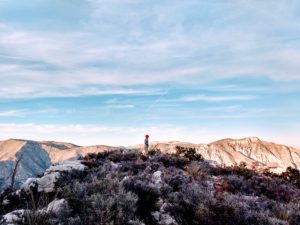
We rolled into camp in just under three hours after many stops. The weather couldn’t have been better, it was hot when we started but after rounding the bend, the trail becomes shaded and windy and a comfortable temperature. Although it was barely five p.m., Kimberlee cooked up a very tasty chicken and dumplings Mountain House dinner. By 6:30 we were snug in our Big Agnes Fly Creek tent (on clearance now at REI, plus footprint). Exhausted from the drive and hike, we fell asleep immediately but woke up often to the howling winds. My friend had recently summited, so I was well-versed in the high winds and took extra heavy duty tent stakes. But I was still nervous each time the side of the tent was mashed against my face. You could hear the wind gathering force like a giant wave, roaring up from the valley and threatening to rip the rain fly right out of the ground.
Eleven hours later, I unzipped the tent to a stunning fire banded sky – one dazzling red strip between the black. I was gobsmacked. As we headed up the summit, I kept stopping to watch the sky but had to wake myself back up and keep going. It took less than an hour, and we had enough light about halfway to turn off our headlamps. As I rounded the last corner, I saw the summit marker just above me. Victory! The wind was ruthless, but I found a small spot behind some rocks that allowed me to sit and watch the sunrise in peace. It’s a very humbling and spiritual thing to reach a summit, to see the Earth as the big beautiful thing it was intended to be, to shut out the noise and just be present.

After a short time of book signing and selfie taking, we headed back down to camp. We left our packs inside the tent to hold it down while we were gone and luckily our tent was still attached to the earth. Another backpacker said his tent had flown halfway down the hill. Our Mountain House Mac and Cheese breakfast was a fail, but nothing could break out spirits after that sunrise. We passed a lot of people on the way down hiking the peak as a day hike, but I’d highly recommend catching the sunrise or sunset at the top. It really is the best view, and you won’t have to share the moment with many others. There was only one other person for part of the time at the top with us. All in all, it took us about six and a half hours with packs.
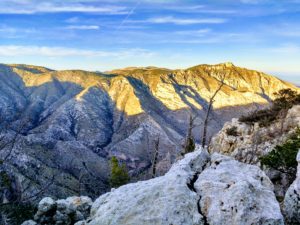
Guadalupe Mountains National Park is one of the least visited national parks, probably because of the remote location near the Texas/New Mexico border, and also because it doesn’t have many camping spots. All 20 tent spots are first-come-first-served with no reservations. When we got to the trailhead in the campgrounds about 10:30am, we were lucky to snag a campsite from someone that was just leaving. We ditched the backpacking tent, and set up a more spacious home, complete with a spot to hang my Madera Hammock.
After resting a bit, we headed over to the visitor center to check out the exhibit. It had lots of really good info on the park, and animal replicas. We also discovered that you do NOT have to be a child to become a Junior Ranger. We diligently worked on the provided workbook, and earned our first Junior Ranger badge!
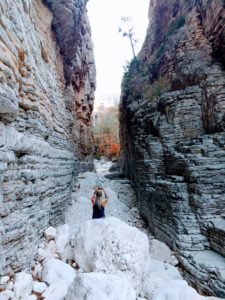
We were so excited about our new badges, we set off to hike Devil’s Hall Trail. Although, it took us less than two and a half hours, this trail did required some scrambling. It’s an easy first mile to the wash, then it’s mostly unmarked, but just keep going. If you follow the wash, you’ll eventually end up at a pretty cool site. But make sure you take a torch or keep an eye on the daylight because you are in the shaded creek bed.
Then lucky for us, there was a star viewing party that night. Two astronomers had set up their telescopes, as if the stars in that dark sky weren’t amazing enough. They pointed out some amazing sights, and we took turns on the telescopes. It was an excellent cap to the day. Some deer joined us for our Sunday morning breakfast before we packed up. Besides one roadrunner, we didn’t see much wildlife. We headed a mile up the road to the Frijole Ranch. From there, Smith Springs is about an hour easy hike that offered us some beautiful fall foliage. Not something we get a lot of in Central Texas.
We wanted to hike the McKittrick trail, which may have the best viewing for fall colors, but we were having a minor gas crisis. No matter what direction you come from, the nearest gas station may be 30 miles or more from the park. Even knowing this we failed to fill up and found ourselves driving 40 miles out of the way to Dell City. It’s a small town with two gas stations, both of which are closed on Sundays, but we asked someone on the street and they directed us to a small credit card station, so we were able to get gas before we were on fumes. It was a wonderful weekend being in nature, but I was ready for a shower. And it’d be eight short hours before I’d finally get one.
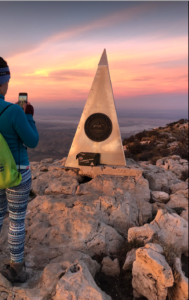
Tips:
- The Guadalupe Mountains National Park is in the Mountain Time Zone (MST), right on the border.
- Expect high winds at the top and prepare accordingly. Take extra tent stakes if you are camping, and a headband to keep your hair from whipping you in the face.
- Plan to take at least a gallon of water for Guad Peak. There is potable water near the trailheads, but not on any trails.
- The nearest gas station is at least 30 miles away from the park, plan accordingly.
- Fires are prohibited in the park, take a camp stove.
- Take trekking poles, the made a huge difference to me and I don’t usually use them.
